A Special Note from A New Friend and Esteemed Collector
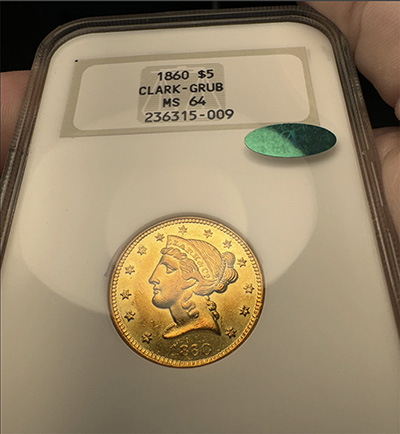
I'm going to start this with an excerpt from my recent CSNS show report.
"I only got 3 hours of sleep that night as I had coins on my mind and I was obsessing over one of the most amazing pieces I had ever seen. It was offered privately so I cant tell you all what it was, but its the kind of coin that burns an image into your brain. I was pondering and trying to make it work, but in the end I couldn't reconcile the price and I had to pass."
Well folks, I ultimately decided that I could not let this one escape me. I thought it would be fun to walk you through the decison making process, and the dilemma of reaching for a coin thats seemingly "overpriced".
On friday mid day, I was seated at a table exploring the wares of a dealer whom I had not done business with before, but we had talked quite frequently and his inventory had always been interesting to me. Another collector walked up to his table and had asked about a copper coin in his case, and they had got to talking. Shortly thereafter, the dealer asked the other collector if he wanted to see a really cool liberty cap half cent. He grabbed that coin from the back, and when he turned around he had two coins in his hand. He put the half cent in front of the collector, and then tossed the other coin my way.
The coin was backwards in an intercept shield slab box, and when I pulled it out and got a look at it, my jaw dropped to the floor and my heart started racing. I have held some amazing coins in my hand, but this one had me "shook" (as the kids say). I then asked the only logical question to ask at that moment... "How much is it?"


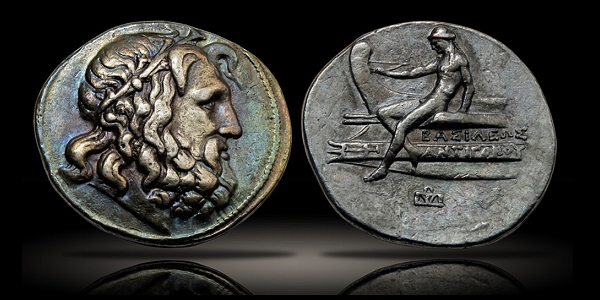
 AU Capital Management President Russ Augustin teams up with CoinWeek to discuss the fascinating Indian Peace Medal series.
AU Capital Management President Russ Augustin teams up with CoinWeek to discuss the fascinating Indian Peace Medal series.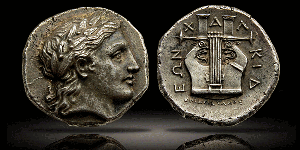 Fearful of Athens and the growing power of the Macedonian Kingdom, Olynthus and the other free cities of the Chalcidice banded together in 432 BCE, forming the Chalcadian League as a defensive coalition. Athens failed to break up this union due to its focus on the Peloponnesian War and its general disinterest in the region, helping solidify the strength of the League.
Fearful of Athens and the growing power of the Macedonian Kingdom, Olynthus and the other free cities of the Chalcidice banded together in 432 BCE, forming the Chalcadian League as a defensive coalition. Athens failed to break up this union due to its focus on the Peloponnesian War and its general disinterest in the region, helping solidify the strength of the League.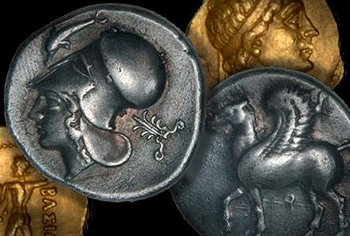
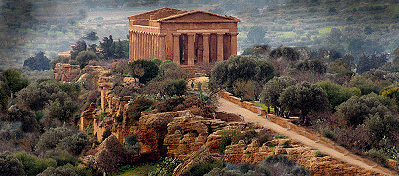
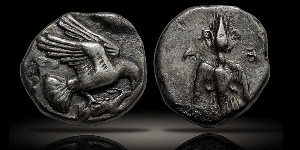 The Colosseo Collection ……
The Colosseo Collection ……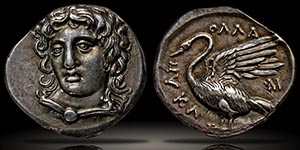 Undoubtedly the finest specimen known of this wonderful issue bearing one of the finest front facing portraits on Greek coins. Of extraordinary late Classical style and with a delightful old cabinet tone.
Undoubtedly the finest specimen known of this wonderful issue bearing one of the finest front facing portraits on Greek coins. Of extraordinary late Classical style and with a delightful old cabinet tone.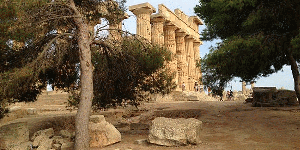 The history of Kamarina, a port city on the southern coast of Sicily, is among the most tumultuous of Ancient Greece. It was founded in 599 BCE by settlers from Syracuse and its location allowed it to grow quickly and amass substantial wealth through trade.
The history of Kamarina, a port city on the southern coast of Sicily, is among the most tumultuous of Ancient Greece. It was founded in 599 BCE by settlers from Syracuse and its location allowed it to grow quickly and amass substantial wealth through trade.
